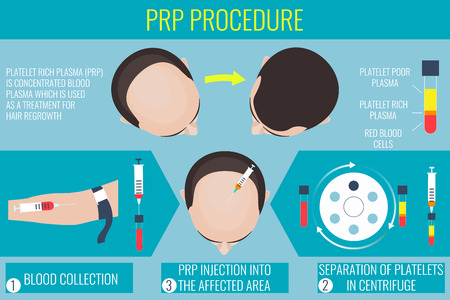1. Understanding the Role of Home Skincare vs. Professional Treatments
When it comes to achieving healthy, glowing skin, both home skincare and professional aesthetic treatments play important roles. But understanding how they differ—and how they can work together—is key to creating an effective skincare plan that suits your lifestyle and goals.
The Basics: What’s the Difference?
Home skincare refers to the daily or weekly routines you do on your own, like cleansing, moisturizing, and applying serums or sunscreen. These are essential habits that maintain your skin’s health over time. On the other hand, professional aesthetic treatments are performed by licensed providers using advanced tools or products—think chemical peels, laser therapy, microneedling, or injectables like Botox and fillers.
Comparison of Home Skincare and Professional Treatments
| Aspect | Home Skincare | Professional Treatments |
|---|---|---|
| Frequency | Daily/Weekly | Monthly/As Needed |
| Main Purpose | Maintenance & Prevention | Correction & Enhancement |
| COST | $-$$ (Affordable) | $$$-$$$$ (Higher Investment) |
| Treatment Depth | Surface-level action | Deeper skin layers targeted |
| User Control | You manage application & frequency | Treatment guided by a trained professional |
| Main Tools/Products Used | Cleansers, moisturizers, SPF, serums, masks | Lazers, injections, advanced equipment & medical-grade products |
The Benefits of Each Approach
Home Skincare:
It helps maintain the results of professional treatments and provides consistency in caring for your skin. It also allows you to build good habits and use ingredients tailored to your skin concerns—like retinol for fine lines or salicylic acid for breakouts.
Professional Treatments:
These go deeper than what over-the-counter products can offer. They’re ideal for addressing more serious concerns such as pigmentation, acne scarring, or age-related changes. Plus, you get expert advice that helps you better understand your skin’s needs.
A Perfect Partnership: Why You Need Both
Your at-home routine lays the foundation for healthy skin every day—it cleanses, protects, and hydrates. Meanwhile, professional treatments offer a boost by targeting specific issues with greater precision and strength. When combined thoughtfully, these two approaches complement each other beautifully.
The key is balance: consistent home care keeps your skin in check between visits to your aesthetic provider, while periodic professional treatments address deeper concerns and help you reach long-term skin goals faster.
This synergy creates a complete skincare strategy that’s both proactive and results-driven—helping you look and feel your best from the inside out.
2. Building an Effective At-Home Skincare Routine
Creating a strong at-home skincare routine is key to maintaining the results of your professional aesthetic treatments and keeping your skin healthy between visits. A personalized regimen should be tailored to your unique skin type, lifestyle, and concerns.
Know Your Skin Type
Before you pick any products, its important to understand your skin type. Heres a quick guide to help you identify where you fall:
| Skin Type | Common Traits | What to Look For in Products |
|---|---|---|
| Oily | Shiny skin, visible pores, prone to breakouts | Oil-free, non-comedogenic, mattifying formulas |
| Dry | Flaky patches, tight feeling, dull appearance | Hydrating ingredients like hyaluronic acid and ceramides |
| Combination | Oily in T-zone, dry on cheeks or elsewhere | Balanced products that hydrate without clogging pores |
| Sensitive | Easily irritated, redness, stinging or burning with some products | Fragrance-free, calming ingredients like aloe and chamomile |
| Normal | Balanced, not too oily or dry, few breakouts or sensitivities | Mild cleansers and light moisturizers to maintain balance |
The Basic Steps of an Effective Routine
A solid daily routine doesnt have to be complicated. These core steps can make a big difference when done consistently:
Cleansing (Morning & Night)
This removes dirt, oil, and makeup while preparing your skin for treatment products. Choose a gentle cleanser suitable for your skin type.
Treatment (After Cleansing)
This step targets specific concerns like acne, dark spots, fine lines, or redness. Use serums with active ingredients such as vitamin C, niacinamide, or retinol based on your needs.
Moisturizing (Daily)
No matter your skin type, hydration is essential. Moisturizers help maintain the skin barrier and lock in active ingredients from your serums.
Sun Protection (Morning)
Daily SPF is non-negotiable. Even if youre indoors most of the day or its cloudy outside, sunscreen protects your skin from UV damage that can undo professional treatment results.
Consistency Is Key
Your at-home skincare works best when done regularly. Don’t expect overnight miracles—most products need at least 4–6 weeks of consistent use before you’ll start seeing changes. Stick with it!
Adjusting Your Routine with Professional Treatments
If youre getting treatments like chemical peels or laser therapy, ask your provider how to adjust your routine before and after sessions. Some active ingredients may need to be paused temporarily to avoid irritation.
Pro Tip:
Avoid trying too many new products at once. Introduce one product at a time so you can track how your skin reacts—and avoid overwhelming it.
A thoughtful home skincare routine works hand-in-hand with professional treatments to keep your complexion looking its best every day.
![]()
3. When to Seek Professional Aesthetic Treatments
While a good home skincare routine is essential for maintaining healthy skin, there are times when professional treatments can make a significant difference. Knowing when to see a licensed aesthetic provider can help you address deeper concerns that over-the-counter products can’t fix.
Signs It’s Time to See a Skincare Professional
If you’re noticing persistent issues that don’t improve with your regular skincare regimen, it might be time to consult an expert. Here are some common signs:
| Skin Concern | Home Care Limitations | Professional Treatment Options |
|---|---|---|
| Stubborn Acne or Acne Scars | Topicals may not reduce deep scarring or cystic acne | Chemical peels, laser therapy, microneedling |
| Fine Lines and Wrinkles | Anti-aging creams work slowly and offer limited smoothing | Injectables like Botox or fillers, fractional lasers |
| Hyperpigmentation or Sun Damage | Brightening serums may take months with minimal change | Chemical peels, IPL (Intense Pulsed Light), laser treatments |
| Dull or Uneven Skin Texture | Exfoliants may not fully resurface the skin | Microdermabrasion, laser resurfacing, dermaplaning |
| Sagging or Loss of Volume | No home treatment restores lost collagen effectively | Dermal fillers, radiofrequency skin tightening treatments |
What Professional Treatments Can Offer That Home Care Can’t
Even the best at-home products can only penetrate so far into the skin. Licensed professionals use medical-grade tools and formulas that reach deeper layers to stimulate collagen, resurface damaged skin, and deliver faster results. Here are a few popular options:
Chemical Peels
A chemical peel uses active acids to exfoliate dead skin cells and boost cell turnover. Its great for treating acne scars, pigmentation, and dull texture.
Laser Therapy
This treatment targets specific skin concerns like wrinkles, sun spots, and redness using focused light energy. It’s especially effective for long-term rejuvenation.
Injectables (Botox & Fillers)
If you’re looking to smooth out expression lines or restore facial volume, injectables offer noticeable results with minimal downtime.
How Often Should You Get Professional Treatments?
The frequency depends on your goals and skin type. Heres a general guideline:
| Treatment Type | Recommended Frequency |
|---|---|
| Chemical Peels (Light) | Every 4–6 weeks |
| Chemical Peels (Medium/Deep) | Every 3–6 months (or as advised) |
| Laser Resurfacing | 1–2 times per year depending on intensity |
| BOTOX® Injections | Every 3–4 months |
| Dermal Fillers | Every 6–12 months depending on product used |
Professional aesthetic care complements your daily skincare efforts by targeting problems more aggressively and efficiently. When used together strategically, home care and in-office treatments can help you achieve clearer, smoother, and more youthful-looking skin.
4. How to Integrate Professional Treatments into Your Routine
Incorporating professional aesthetic treatments into your skincare routine can bring impressive results when done right. The key is to find a balance that supports your daily regimen without overwhelming your skin or causing irritation. Here’s how you can seamlessly blend both for glowing, healthy skin.
Understand Your Skins Needs First
Before booking any treatments, it’s important to understand what your skin actually needs. This means identifying your skin type (oily, dry, combination, sensitive) and addressing specific concerns such as acne, hyperpigmentation, fine lines, or dullness. A consultation with a licensed aesthetician or dermatologist can help guide you in the right direction.
Timing is Everything
Not all professional treatments should be done frequently. Overdoing it can lead to irritation or even damage. Here’s a general guideline on how often some popular treatments can be safely incorporated:
| Treatment Type | Recommended Frequency |
|---|---|
| Chemical Peels (light) | Every 4–6 weeks |
| Microneedling | Every 4–6 weeks |
| Laser Treatments | Every 6–12 weeks (depends on type) |
| Hydrafacial | Once a month |
| Botox/Dysport | Every 3–4 months |
| Dermal Fillers | Every 6–12 months |
Coordinate with Your Home Routine
Your at-home skincare products should complement—not compete with—your professional treatments. For example, if you’ve had a chemical peel, ease up on exfoliating acids like glycolic or salicylic acid for a few days. Focus instead on hydration and barrier repair with gentle cleansers and moisturizers.
Sample Weekly Skincare Plan with a Monthly Facial:
| Day of Week | Skincare Focus |
|---|---|
| Monday – Wednesday | Cleansing, light exfoliation, hydration, sunscreen (AM); retinol or serum (PM) |
| Thursday (Facial Day) | Mild cleanser, no active ingredients; let the professional treatment work its magic! |
| Friday – Sunday | Soothe and hydrate; skip strong actives to allow recovery; resume normal routine by Sunday night if no irritation occurs. |
Avoid Common Mistakes
- Skipping SPF: After professional treatments, your skin is more vulnerable to UV damage—daily sunscreen is non-negotiable.
- Doubling Up on Actives: Don’t combine multiple strong active ingredients at once (like retinol and acids) unless advised by a pro.
- No Downtime Planning: Some treatments may cause temporary redness or flaking—schedule accordingly to avoid surprises before events.
- Irritating DIYs Post-Treatment: Avoid at-home peels or scrubs right after in-office procedures.
Create an Ongoing Plan with Your Provider
Aesthetic care isn’t one-size-fits-all. Work with your provider to create a personalized plan based on your goals and lifestyle. They can help you time treatments around vacations, special events, or seasonal changes that affect your skin.
5. Maximizing the Benefits of Both Approaches
To achieve glowing, youthful-looking skin, it’s important to understand how to get the most out of both your at-home skincare routine and professional aesthetic treatments. When these two strategies work together, they can deliver powerful results that last.
Know What Each Approach Offers
Your home skincare routine is essential for daily maintenance. It keeps your skin clean, hydrated, and protected from environmental stressors like sun and pollution. Professional treatments, on the other hand, go deeper—targeting specific concerns like hyperpigmentation, fine lines, acne scars, or skin laxity with advanced technology and medical-grade products.
Comparison: Home Skincare vs. Professional Treatments
| Aspect | Home Skincare | Professional Treatments |
|---|---|---|
| Frequency | Daily (morning & night) | Monthly or as recommended |
| Main Benefits | Cleansing, hydration, protection | Deep rejuvenation, collagen boost, targeted correction |
| Products/Tools Used | Cleansers, serums, moisturizers, sunscreen | Chemical peels, lasers, microneedling, injectables |
| User Skill Required | No professional training needed | Treatment performed by licensed professionals |
| Cumulative Effect | Sustains skin health over time | Kicks off skin transformation faster |
Create a Personalized Plan That Works for You
The best way to balance both approaches is to build a plan that fits your lifestyle and goals. For example:
- If you’re targeting dark spots or uneven texture, use brightening serums at home while scheduling monthly chemical peels.
- If anti-aging is your focus, combine retinol-based products with quarterly microneedling or laser treatments.
- If you have sensitive skin, stick to gentle at-home care and opt for non-invasive treatments like hydrafacials or LED therapy.
The Role of Your Aesthetic Provider
Your aesthetician or dermatologist can help guide you on when to schedule treatments and what to use at home in between visits. They’ll ensure that your products complement your professional services—not work against them. Always share your full skincare routine during appointments so they can make informed recommendations.
A Few Pro Tips for Long-Term Skin Health:
- Simplify your skincare: More isn’t always better. Stick to proven basics unless advised otherwise by a professional.
- Avoid overlapping actives: Don’t use strong exfoliants or retinoids right before or after in-office treatments unless directed.
- Sunscreen is non-negotiable: Especially after treatments when your skin is more sensitive to UV damage.
- Pace your treatments: Give your skin time to recover between sessions to avoid irritation or over-processing.
- Kickstart good habits early: Prevention is easier than correction—start combining both methods before major signs of aging appear.
A thoughtful combination of daily skincare and scheduled professional treatments can help you maintain radiant skin all year round. With consistency and expert guidance, you’ll be well on your way to achieving long-lasting results that look natural and feel amazing.


